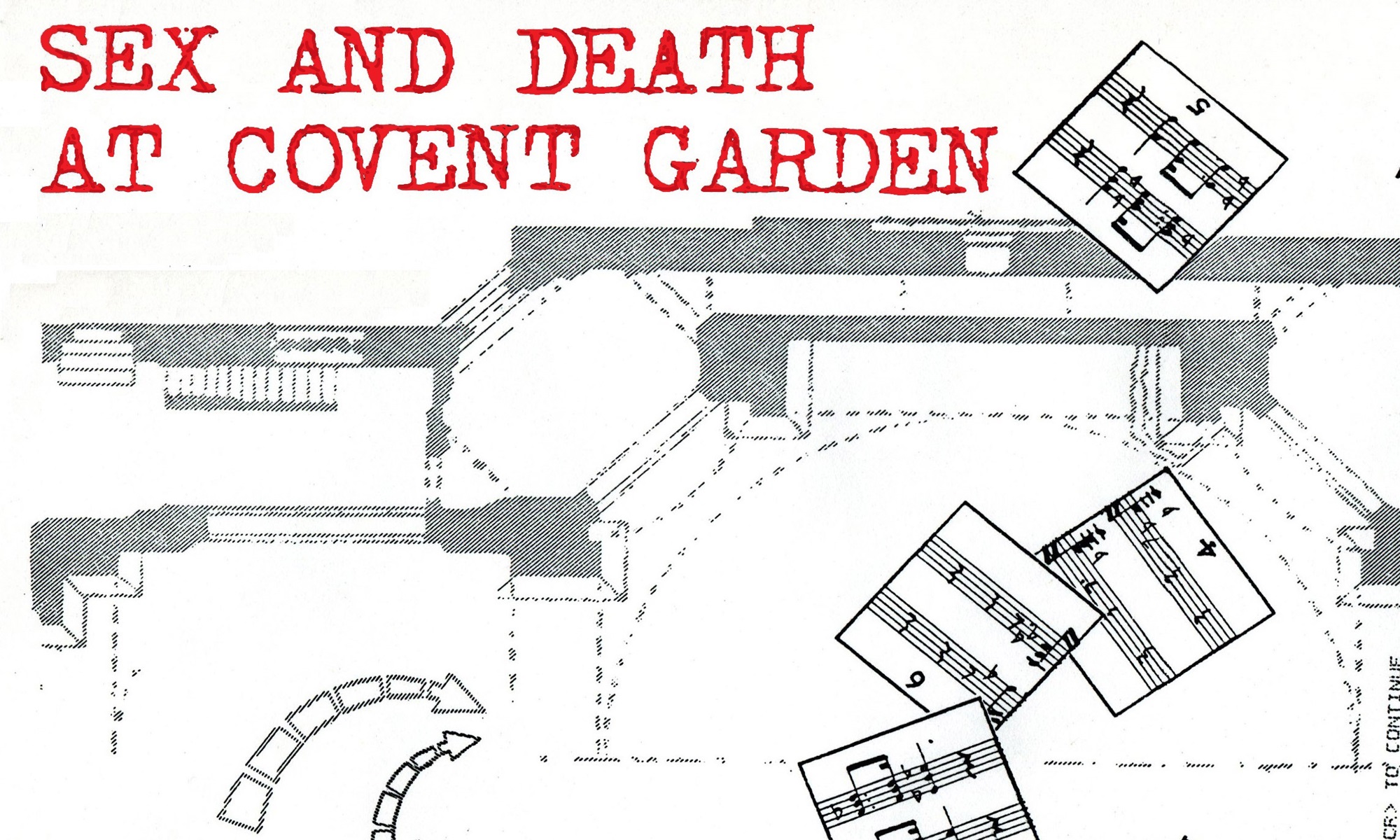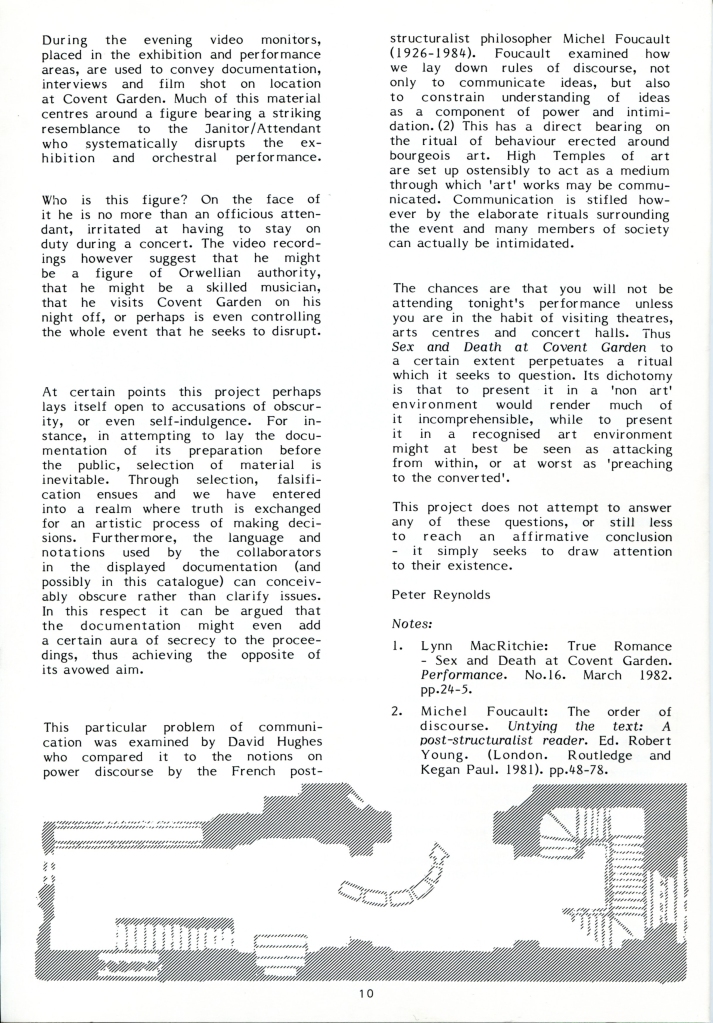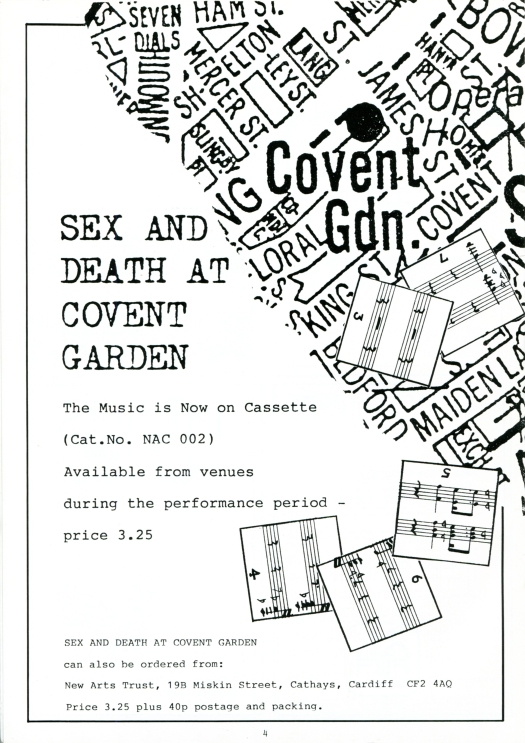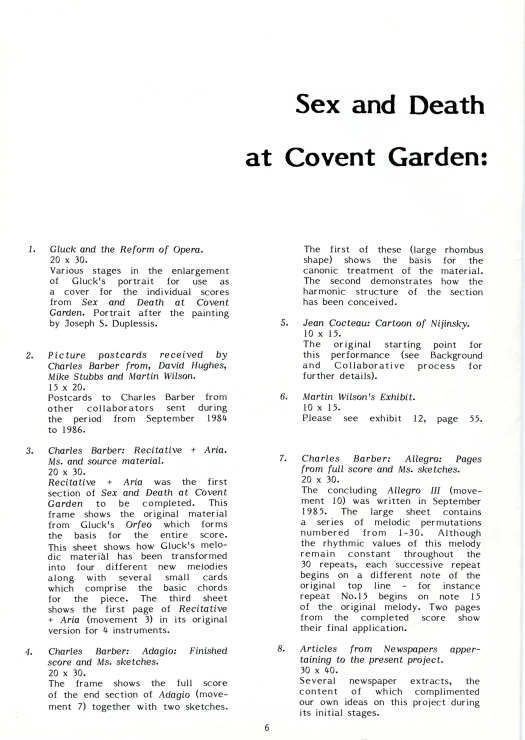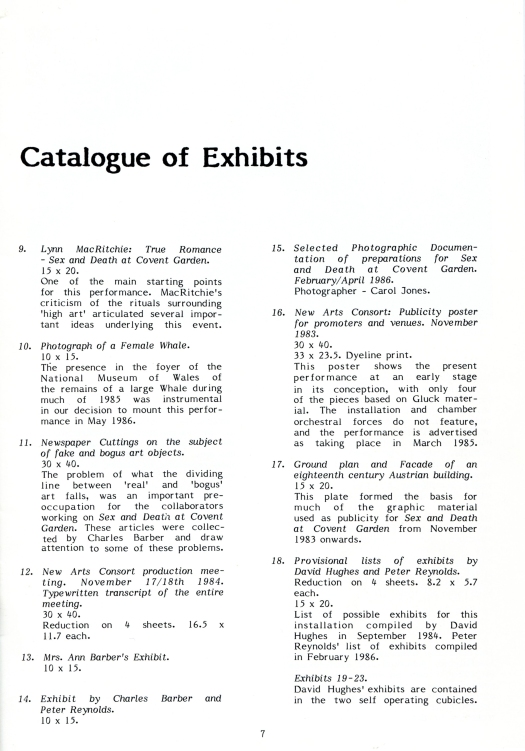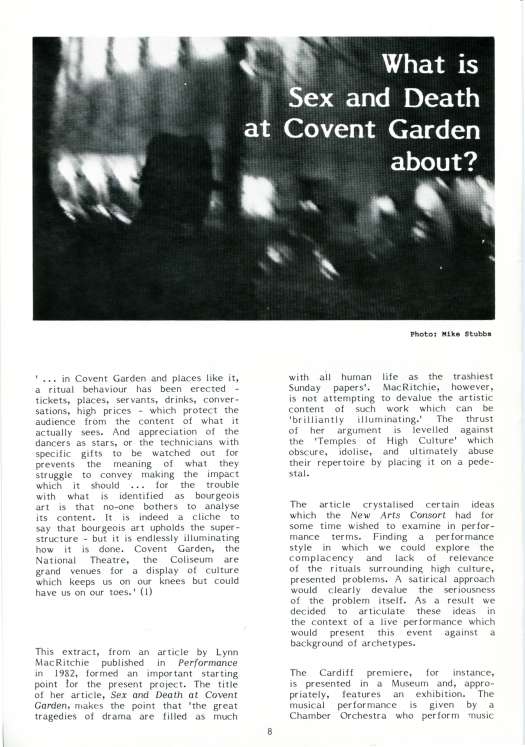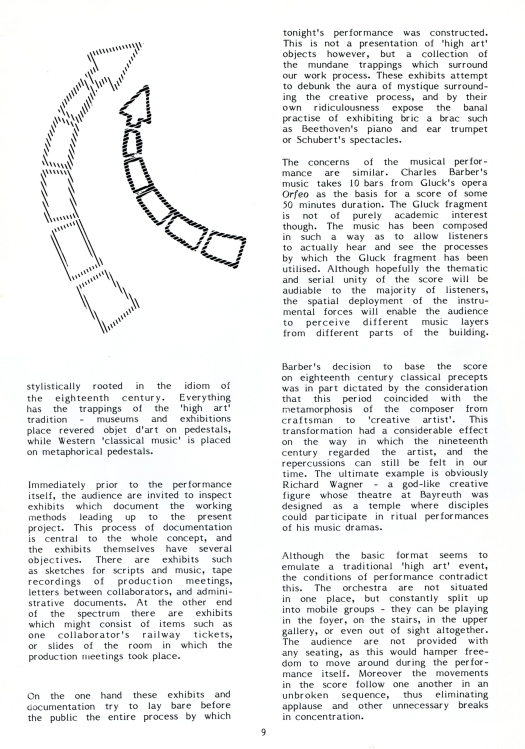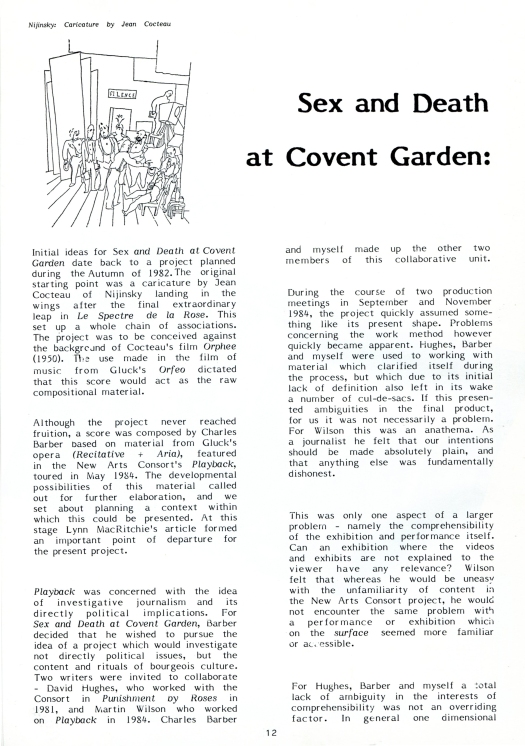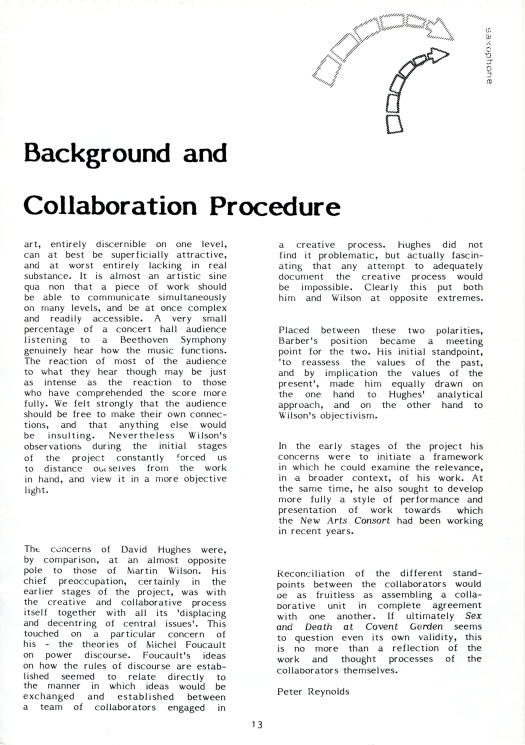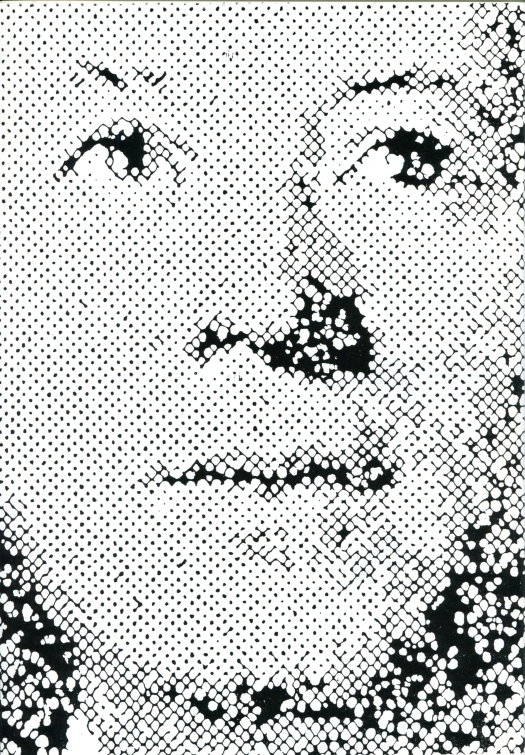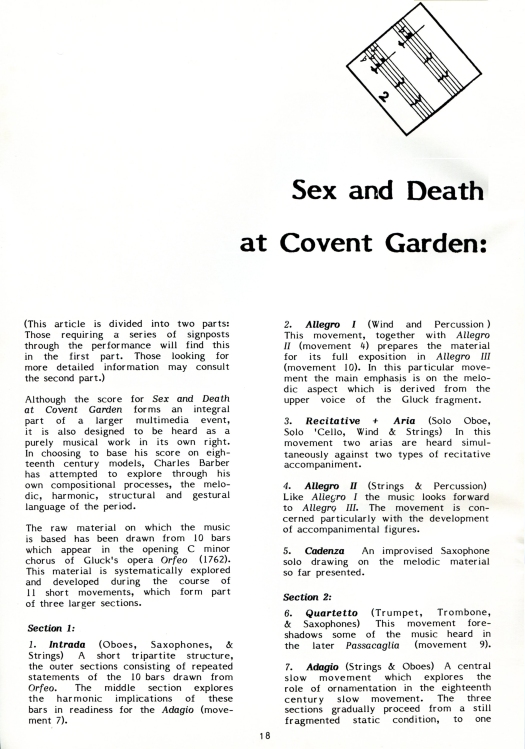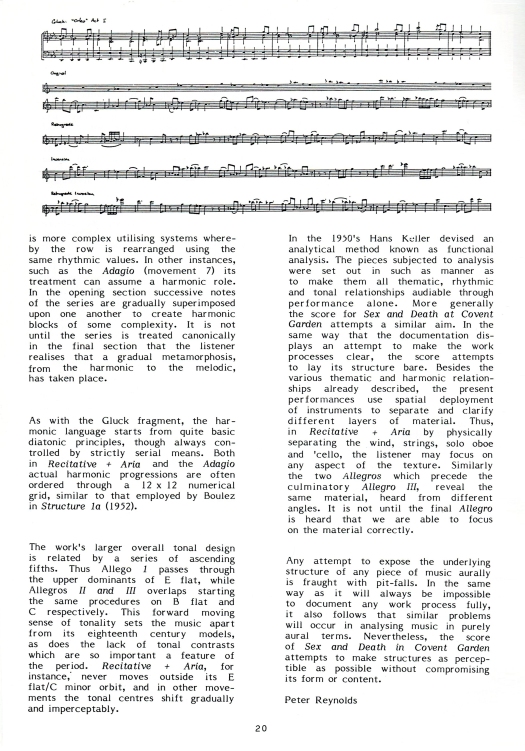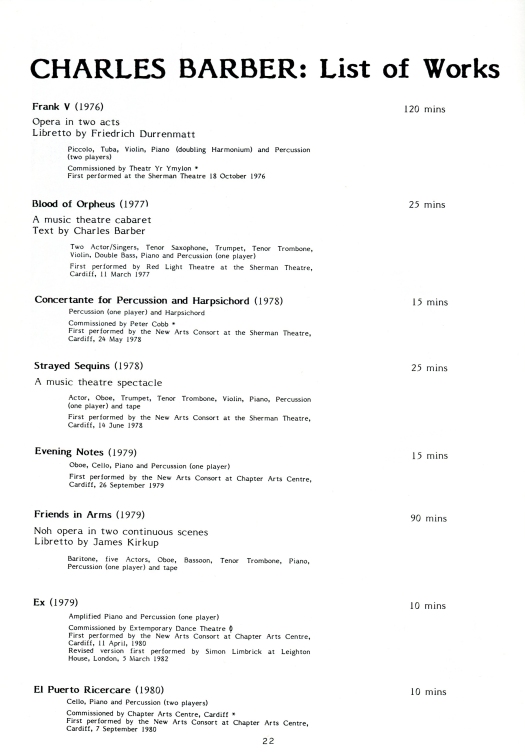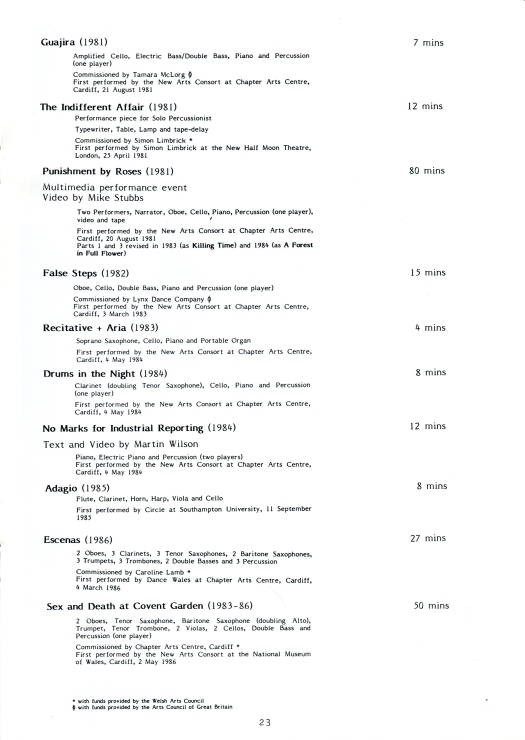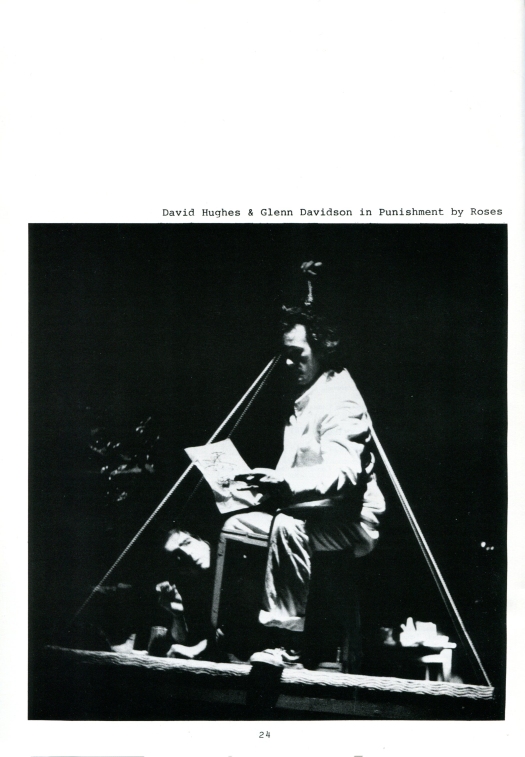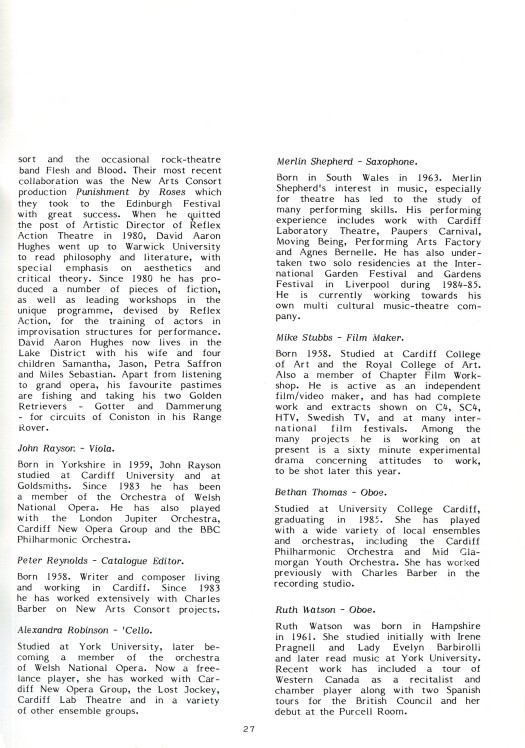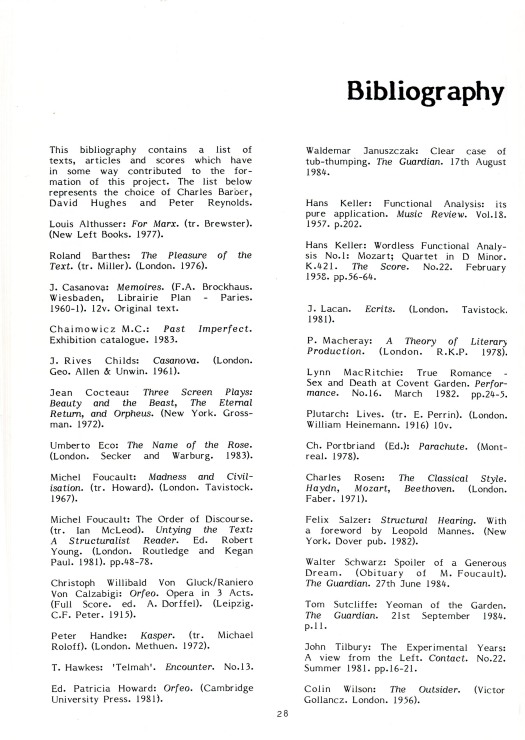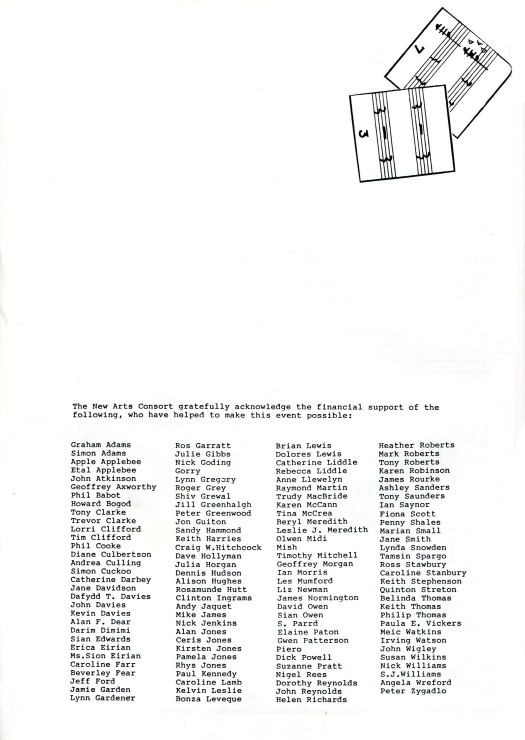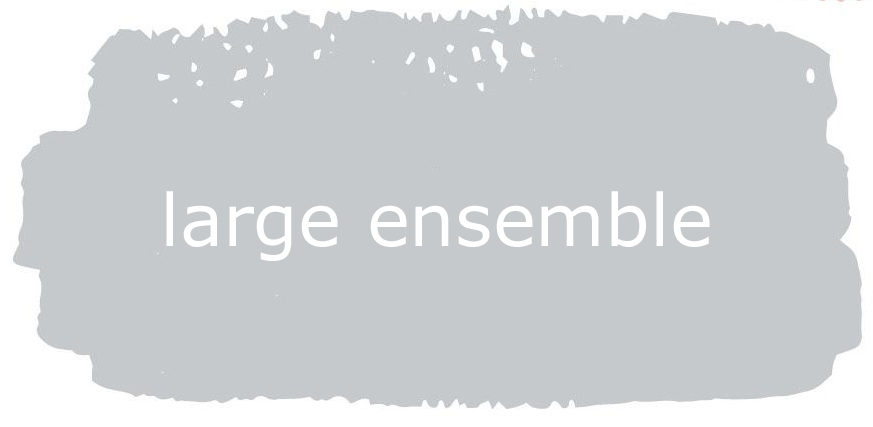Sex and Death at Covent Garden (1986, revised 2024)
for chamber orchestra
Revised version (2024)
2 ob; 2 bsn
1 tpt; 1 tbn
timp
2 vla; 2 vcl; db
Duration: 16 minutes
Originally created in 1986 as an orchestral installation, Sex and Death at Covent Garden has been revised, in an abridged version, for concert performance.
A musical fragment from Christoph Williband Gluck’s opera Orfeo ed Euridice (1762), provides the starting point for the work.
The four continuous movements are: Intrada; Recitative + Aria; Allegro; Cadenza
The title comes from an article by Lynn MacRitchie published in Performance magazine, Issue No 16 in March/April 1982. Her article makes the point that “the great tragedies of drama are filled as much with all human life as the trashiest Sunday papers”. MacRitchie, however, is not attempting to devalue the artistic content of such work. The thrust of her argument is levelled against ‘Temples of High Culture’ which obscure, idolise and ultimately abuse their repertoire by placing it on a pedestal.
Score
Orchestral parts
Orchestral parts available at the International Music Score Library Project (IMSLP)
Score and parts also available from Ty Cerdd – Music Centre Wales
Original version (1986)
2 ob; 1 t sax; 1b sax (+ a sax)
1 tpt; 1 tbn
timp
2 vla; 2 vcl; db
Duration: 50 minutes
Commissioned by Chapter, Cardiff, with funds provided by the Welsh Arts Council
Sex and Death at Covent Garden is an installation event for chamber orchestra. Taking as its starting point a few musical fragments from Gluck’s opera Orfeo, the work explores eighteenth century stylistic and structural ideas. The musicians are constantly re-distributed, splitting into mobile groups to create a wide range of spatial effects.
Intrada; Allegro I; Recitative + Aria; Allegro II; Cadenza; Quartetto; Adagio;
Ritornello; Passacaglia; Allegro III; Cadenza
First performed by the New Arts Consort at the National Museum of Wales, Cardiff on 2 May 1986
with Ruth Watson (oboe), Bethan Thomas (oboe), Matthew Bailey (alto and baritone saxophones), Merlin Shepherd (tenor saxophone), Katherine Gifford (trumpet), Gwyn Daniels (trombone), John Abendstern (timpani), Charlie Buchanan (viola), John Rayson (viola), Steven Callow (cello), Alexandra Robinson (cello) and Michael Bell (double bass). Lox Coxhil: soprano saxophone.
| Video production: Mike Stubbs | Technician: Trisha Webb |
| Performance texts: David Hughes | Construction: Paul Kennedy |
Administrative co-ordinator: Peter Reynolds
Produced by New Arts Consort with the financial support of Arts Council of Wales
Lynn MacRitchie article, Performance magazine, Issue 16, March 1982

Video
Press
“Charlie Barber’s latest work, Sex and Death at Covent Garden, is a stunning event. Performed by the new Arts Consort in Cardiff’s National Museum of Wales among homoerotic marble sculptures and white-jacketed Canton trendies, it’s reminiscent of those Sixties happenings where the audience was an integral part of the live performance…The orchestra, starting with 10 bars from Gluck’s Orfeo, disperse and reassemble at various points…The music is marvellously sonorous, arranged with the skill that is always apparent in Barber’s work.”
David Adams, The Guardian, May 1986
Performance Magazine, Issue 42, July/August 1986 p 36-37
“Charlie Barber’s Sex and Death at Covent Garden intriguingly called ‘an orchestral installation’, is basically an extended composition for chamber orchestra, whose members are ‘constantly re-distributed, splitting into mobile groups to create a wide range of spatial effects’. Sections of the piece come from the heavens, in the gallery of the museum’s high rotunda, other parts from the widely distanced staircases at either end of the hall, and from other more obscure parts, all in the tradition of the spatial antiphony of Gabrieli at St Marks. Barber’s very fine orchestral composition is an extended piece in eleven short movements for thirteen players, entirely derived from ten bars of the opening chorus of Gluck’s opera Orfeo systematically dissected, displaced, and subjected to various compositional procedures. The music stands apart from run of the mill systems music, however, in being rigorously organised but not static, and well able to hold its own developmentally for its 50 minutes duration.”
David Briers, Performance magazine, July 1986
Performances
| 02.05.86 | CARDIFF | National Museum of Wales | New Arts Consort |
| 17.05.86 | NOTTINGHAM | Midland Group | New Arts Consort |
Images (from rehearsals in 1986)
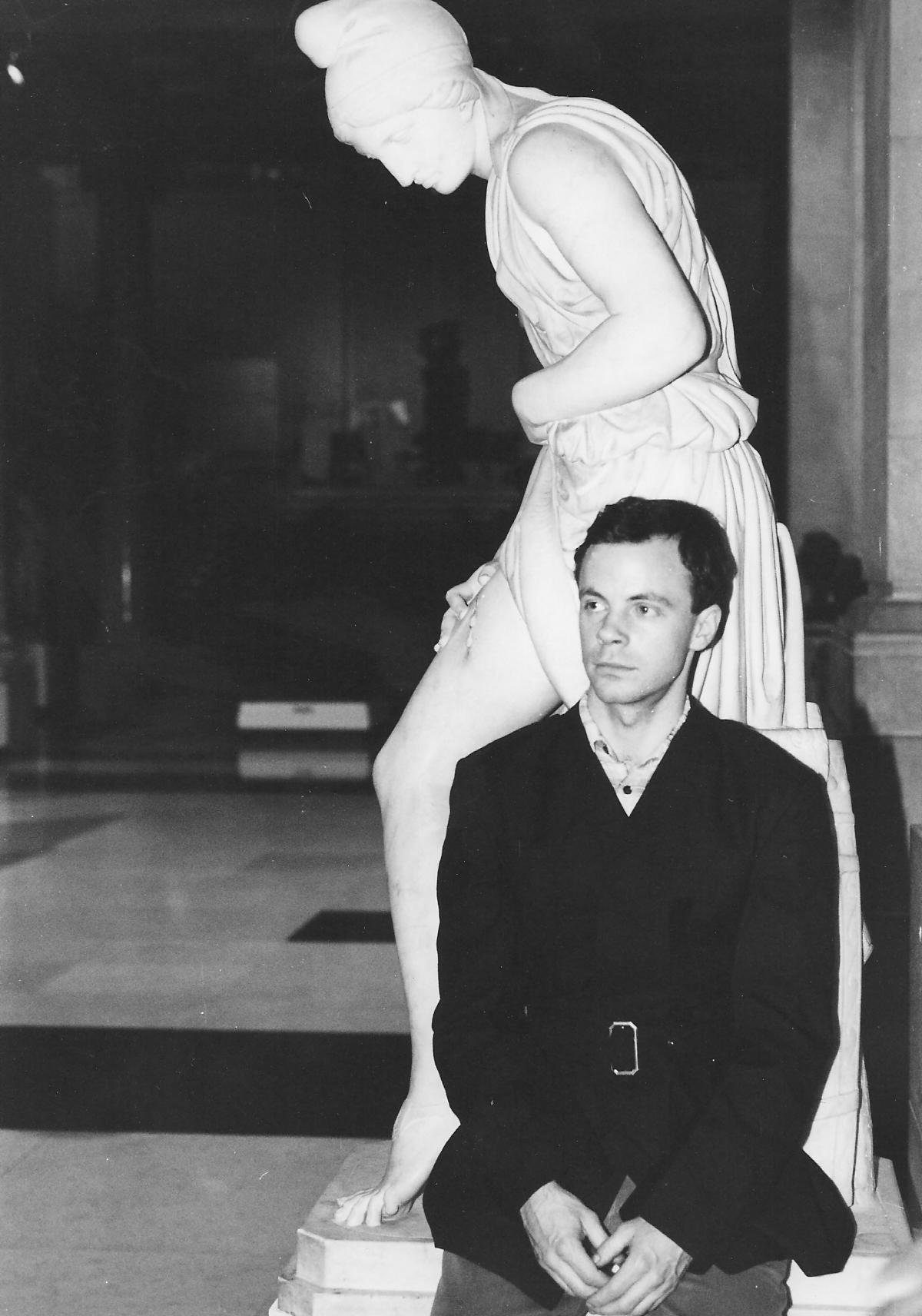
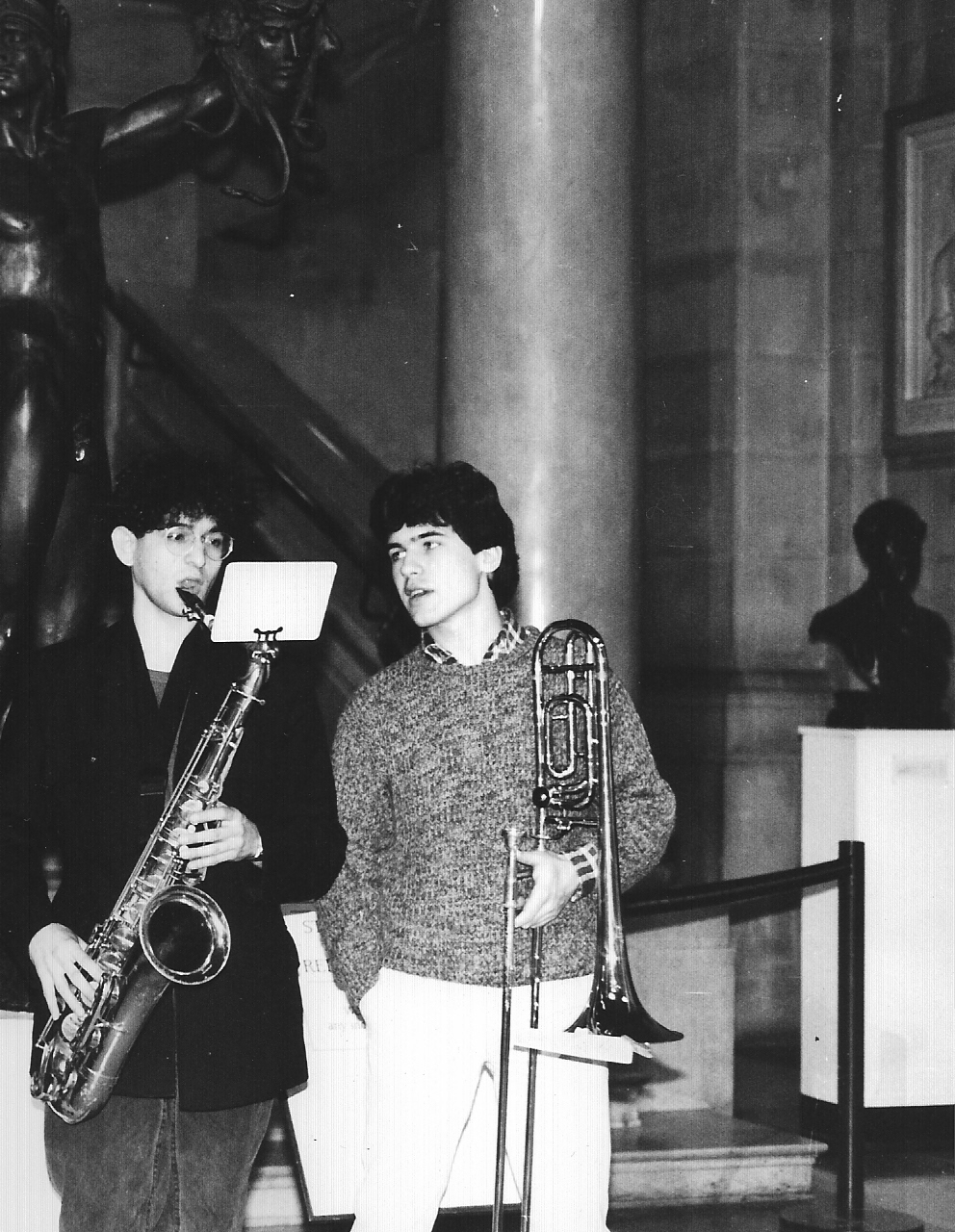

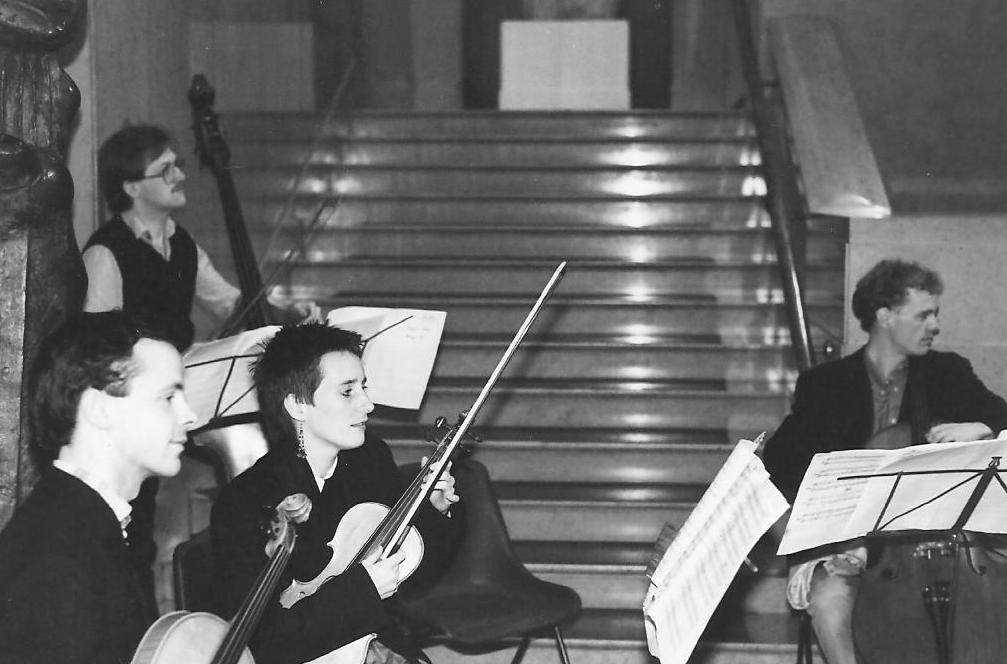
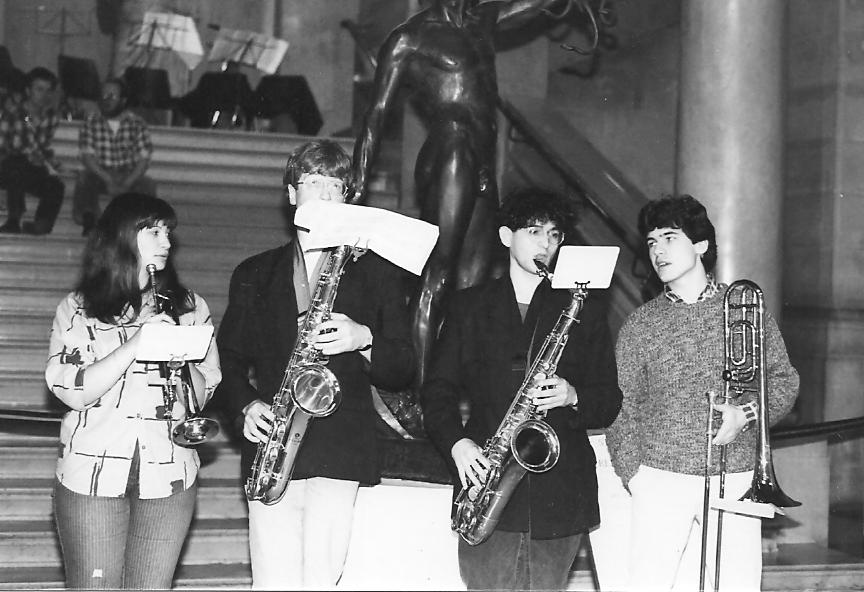
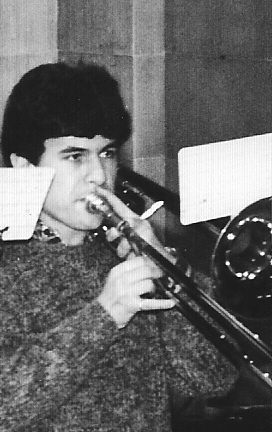

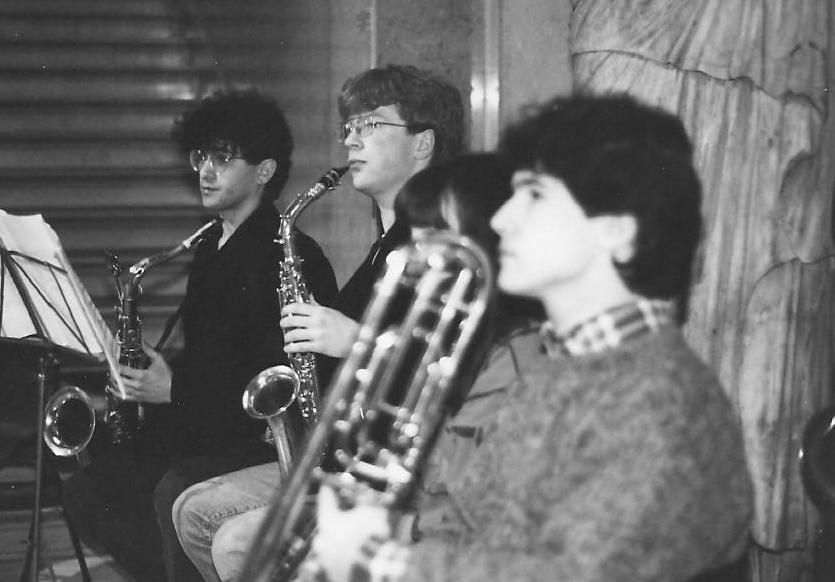


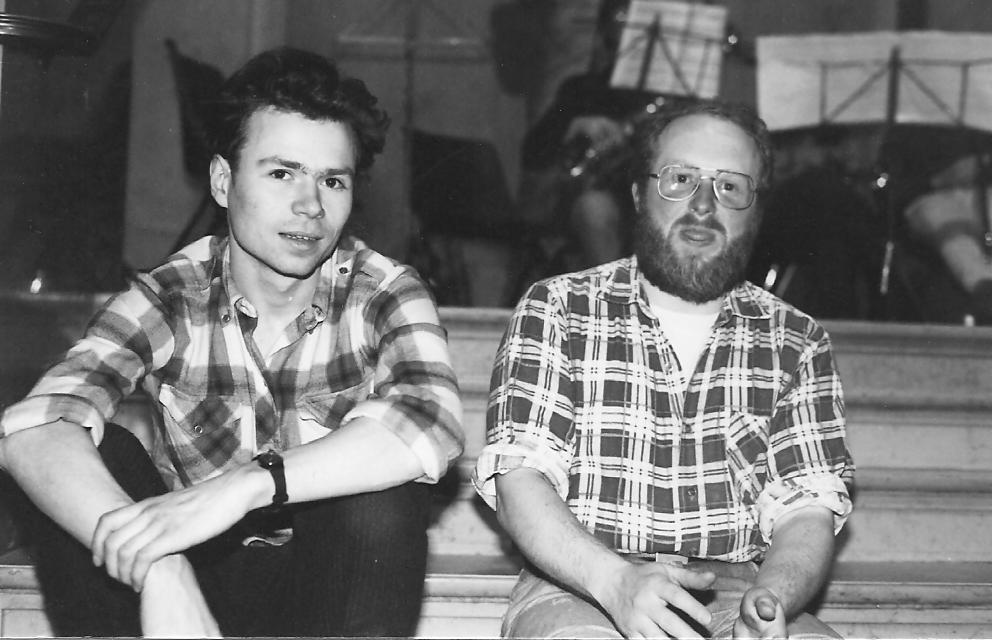
Programme
Related content

Adagio (1985) §
fl, cl, hn, hp, vla, vcl
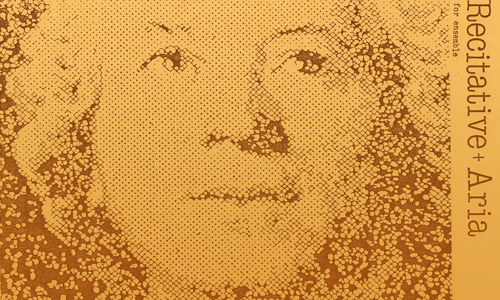
Recitative + Aria (1983) §
s sax, vcl, pno, harmonium

